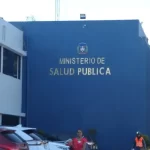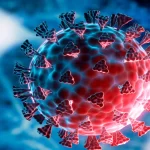IAEA Fukushima report downplays radiation risks and ignores science – Greenpeace

Tokyo, 1 September2015 – The International Atomic Energy Agency’s (IAEA) Fukushima report,released Monday downplays the ongoing environmental and health effects of theFukushima nuclear disaster. According to Greenpeace Japan, the report playsinto the Abe government’s agenda to normalise the ongoing nuclear disaster.
“The IAEA concludesthat no discernible health consequences are expected as a result of theFukushima disaster, but admits important uncertainties in both radiation doseand long-term effects. Nobody knows how much radiation citizens were exposed toin the immediate days following the disaster. If you don’t know the doses, thenyou can’t conclude there won’t be any consequences. To say otherwise ispolitical rhetoric, not science,” said Kendra Ulrich, senior global energy campaignerwith Greenpeace Japan.
“Even theInternational Commission on Radiological Protection (ICRP) has concluded thatthere is no safe level of radiation exposure. To intentionally subject nuclearvictims to raised radiation levels is unjustified, particularly when we havethe tragic reminder of Chernobyl where we saw increased rates of cancers morethan five years after the crisis.”
“The IAEA reportactively supports the Abe government’s and the global nuclear industry’s agendato make it appear that things can return to normal after a nuclear disaster.But there is nothing normal about the lifestyle and exposure rates that thevictims are being asked to return to. What is clear is that the Japanesegovernment has utterly failed to learn the lessons of the Fukushima nuclearaccident, as is shown by the NRA ignoring outstanding safety issues in order toallow the restart of the Sendai nuclear reactor” said Ulrich, in reference topage 3 of the IAEA report.
The Japanesegovernment is systematically lifting evacuation orders in progressively morecontaminated areas, attempting to increase the public’s tolerance for what isan acceptable limit of radiation to which the Fukushima victims areexposed.
A Greenpeace Japaninvestigation in July this year, for instance, revealed radioactivecontamination in the forests and land of Iitate district in Fukushimaprefecture so widespread and at such a high level that it will be impossiblefor people to safely return to their homes.
Decontamination hasbeen restricted to limited areas, and does not even attempt to address the vastexpanses of contaminated forests and waterways. Given that many formerresidents will no longer be able to work in their previous lines of work due tothe environmental contamination, it is intolerable to state that a lack ofincome is an acceptable “constraint” for the lives of the victims, as the IAEAreport implies.
In May, GreenpeaceJapan released an analysis of the IAEA summary report, which is stillapplicable to our preliminary reading of the full IAEA report. Greenpeace iscurrently reviewing the multiple technical documents and annexes releasedtogether with the Fukushima report.














